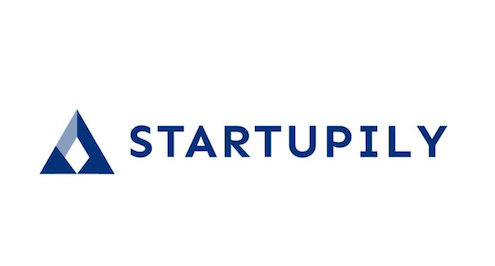Have you or your employees been feeling work from home burnout and Zoom fatigue these past months despite the supposed convenience of working from home and using videoconferences to meet?
Unfortunately, the vast majority of efforts to address WFH burnout try to treat the symptoms without addressing the root causes. The fundamental root cause of WFH burnout stems from organizations adapting their existing ways of interacting in “office culture” to remote work. To defeat WFH burnout, organizations need to understand the reality of the problems leading to WFH burnout to survive and thrive in our new world. Otherwise, using office-style culture to conduct virtual work is simply forcing a square peg into a round hole, leading much staff to burn out.
Recognize the 12 Problems Leading to Work-From-Home Burnout
Combining my expertise in emotional and social intelligence with research on the specific problems of working from home during COVID, I’ve untangled these two concepts into a series of factors:
- Deprivation of our basic human need for meaning and purpose. Perhaps the biggest problem is that the vast majority of us don’t realize we aren’t simply experiencing work-from-home burnout. We’re deprived of the fulfillment of basic human needs of meaning and purpose that we get from work. Our sense of self and identity, narratives of ourselves, and the meaning-making we have in our lives are tied to our work. That’s all severely disrupted by shifting to remote work.
- Deprivation of our basic human need for connection. Our work community offers a key source of fulfillment of the need for connection for many of us. Work-from-home cuts us off from much of our ability to connect effectively to our colleagues as human beings.
- Deprivation of building trust. In-office settings, it’s easy to build trust through informal interactions. This building of trust doesn’t happen naturally in virtual settings. There is a reason teams that start off virtual, but later meet in person at a company, work together substantially better after doing so. By contrast, teams that shift from in-person settings to virtual ones gradually lose that sense of shared humanity and trust.
- Deprivation of mentoring and informal professional development. A critical part of on-the-job learning stems from informal mentoring from senior colleagues. It also comes from the observational professional development you get from seeing how your colleagues do their jobs. Losing this mentoring has proven especially challenging for younger employees.
- It’s not simply “Zoom fatigue.” It’s a real experience, but it’s not about Zoom itself, or any other videoconference software. The big challenge stems from our intuitive expectations about virtual meetings bringing us energy through connecting to people but failing to get our basic need for connection met. In-person meetings, even if they’re strictly professional, still get us to connect on a human-to-human level. By contrast, our emotions just don’t process videoconference meetings as truly connecting us on a human-to-human gut level.
- Forcing a square peg into a round hole. Many companies try to replace the office culture glue of social and emotional connection through Zoom happy hours and similar activities that transpose in-person bonding events into virtual formats. Unfortunately, such activities don’t work well. Similar to other videoconferences, we have intuitively elevated expectations. We end up disappointed and frustrated by failing to have our needs met.
- Lack of skills in virtual work technology tools. This problem leads to lowered productivity and frustrating experiences for those who need to collaborate.
- Lack of skills in effective virtual communication. It’s notoriously hard to communicate effectively even in person. Effective communication becomes much more difficult when in-office teams become virtual teams.
- Lack of skills in effective virtual collaboration. There’s no natural way to have the needed casual interactions that are vital to effective collaboration and teamwork. Body language and voice tone are important to noticing brewing people’s problems, and virtual communication provides us fewer opportunities to notice such issues.
- Lack of accountability. In-office environments allow for natural ways to hold employees accountable. Leaders can easily walk around the office, visually observing what’s going on and checking in with their direct reports on their projects. The same applies to peer-to-peer accountability: it’s much easier to ignore an email with that question than someone stopping you in the hallway or standing in the doorway to your office. You’ll need to replace that accountability with a different structure for remote work.
- Poor work-from-home environments. Some employees might have access to quiet spaces and a stable internet connection, while others may not. Given the restrictions brought about by the pandemic, overhauling workspaces will take significant time and resources not available to many.
- Poor work/life boundaries. Ineffective separation of work and life stems from both employer and employee actions. In the long term, doing so causes lowered productivity, increased errors, and eventual burnout.
Conclusion
Work from home burnout and Zoom fatigue is much more complex than they appear. You need to implement a wholesale strategic shift to reframe your company culture and policies from the “emergency mode” of working from home to remote work is the new normal.
Biography
Dr. Gleb Tsipursky is an internationally renowned thought leader in future-proofing and cognitive bias risk management. He serves as the CEO of the boutique future-proofing consultancy Disaster Avoidance Experts. Which specializes in helping forward-looking leaders avoid dangerous threats and missed opportunities.
A best-selling author, he wrote Never Go With Your Gut: How Pioneering Leaders Make the Best Decisions and Avoid Business Disasters (Career Press, 2019), The Blindspots Between Us: How to Overcome Unconscious Cognitive Bias and Build Better Relationships (New Harbinger, 2020), and Resilience: Adapt and Plan for the New Abnormal of the COVID-19 Coronavirus Pandemic(Changemakers Books, 2020).
He has over 550 articles and 450 interviews in USA Today, Inc. Magazine, CBS News, Time,Business Insider, Government Executive, Fortune, The Chronicle of Philanthropy, Fast Company, and elsewhere. His expertise comes from over 20 years of consulting, coaching, and speaking and training on change management, decision making, and risk management strategy. It also comes from over 15 years in academia as a behavioral scientist, including 7 as a professor at Ohio State University.
Contact him at Gleb[at]DisasterAvoidanceExperts[dot]com, LinkedIn, Twitter @gleb_tsipursky, Instagram @dr_gleb_tsipursky, Medium @dr_gleb_tsipursky, and register for his free Wise Decision Maker Course.
- Why Your Startup Should Start as It Means to Go On
- Empower Your Business with GridPanel Comprehensive Web Scraping Solutions
- Understanding the Role of Elastic Fibers in Modern Fabrics
- Cyber Defenders: A Look at the Global Cybersecurity Industry
- Elevate Your Business with Strategies from an Entrepreneur Author




